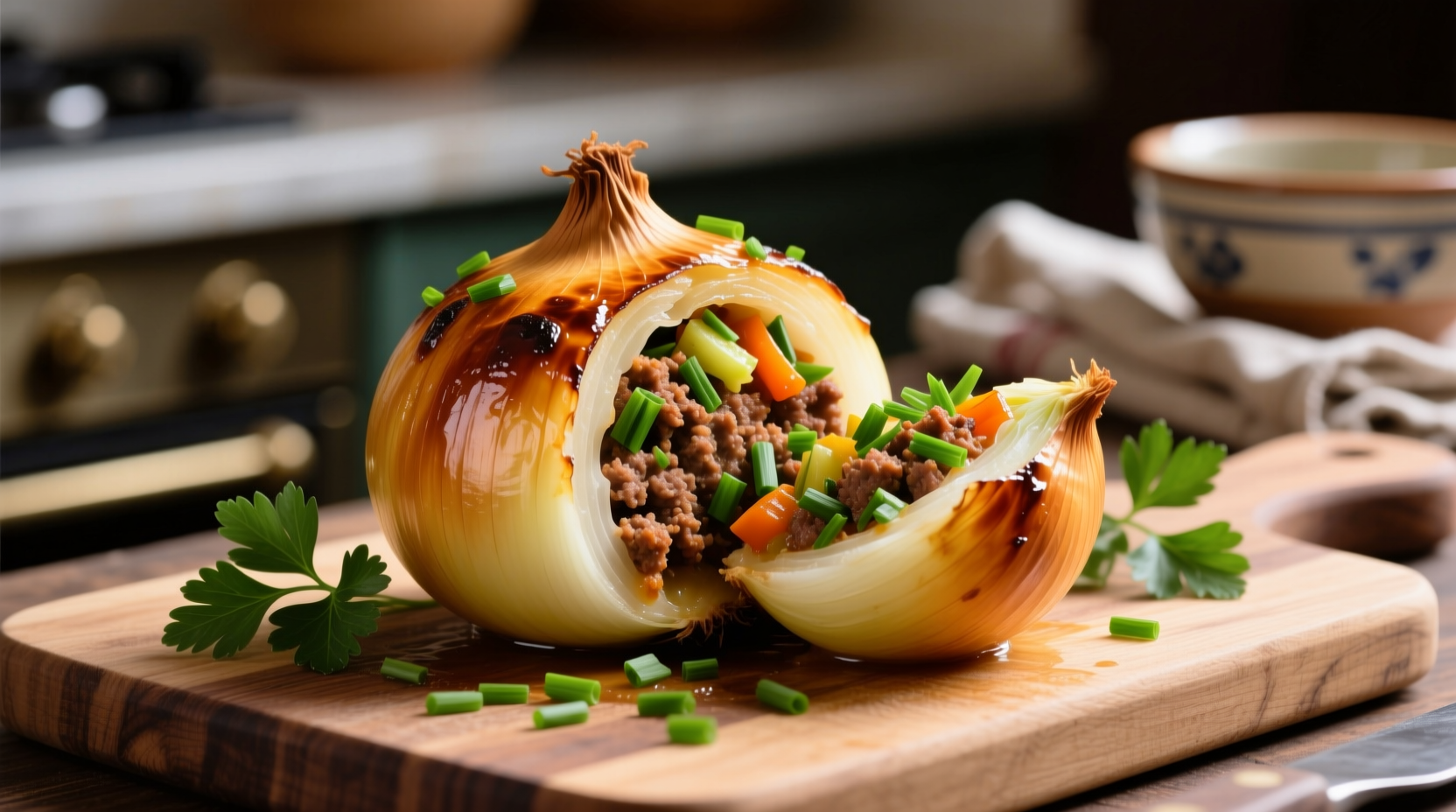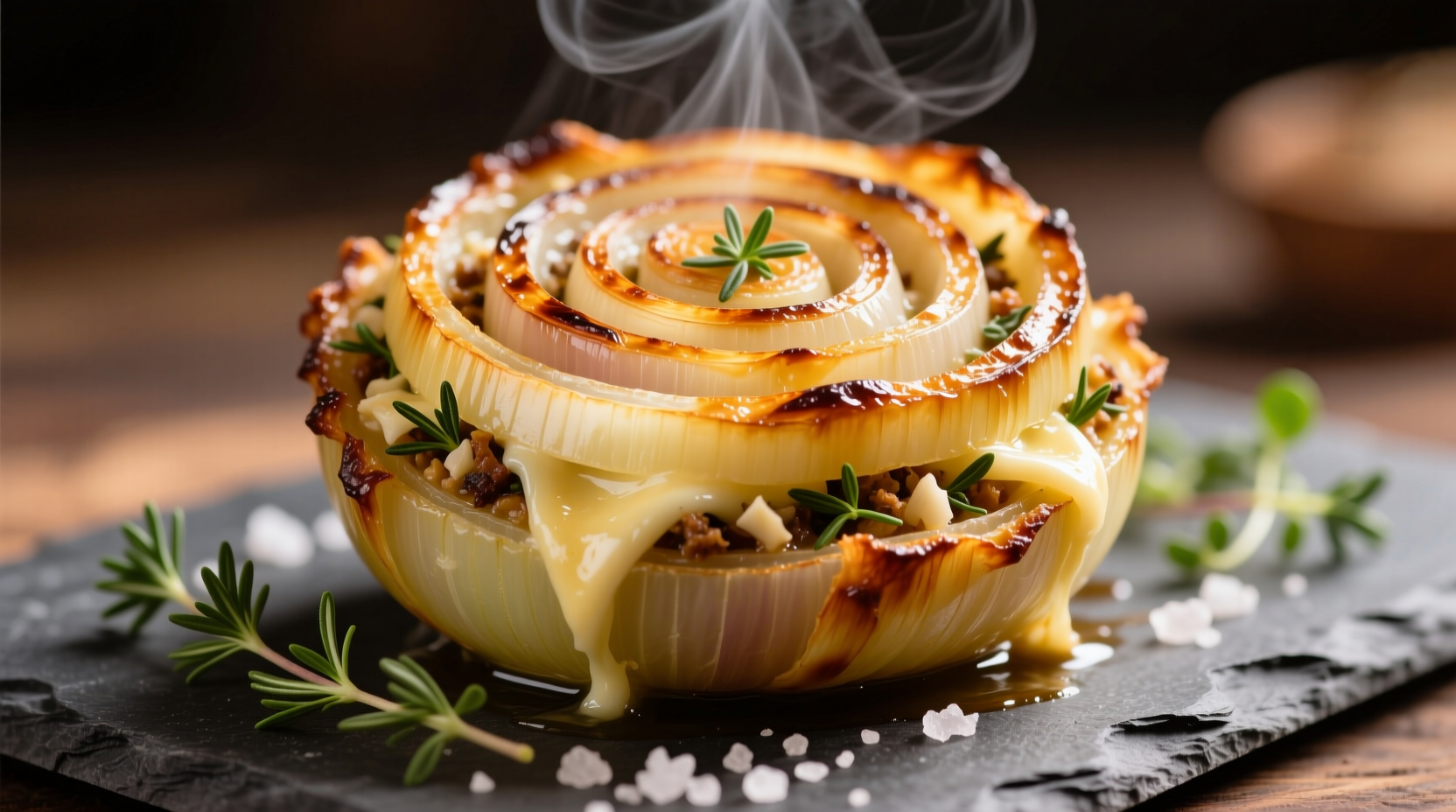The Timeless Appeal of Stuffed Onions
For centuries, resourceful cooks have transformed simple onions into culinary masterpieces through stuffing techniques. This preparation method emerged as a practical solution for using early spring onions before they bolted, evolving into a sophisticated dish celebrated across multiple cultures. Unlike modern interpretations that often treat onions merely as aromatics, stuffed onion recipes showcase the vegetable as the star ingredient.

Why Stuffed Onions Deserve Your Attention
Stuffed onions offer remarkable versatility for home cooks seeking impressive yet approachable dishes. The natural cup shape of onions creates perfect edible containers that absorb flavors while maintaining structure during cooking. When prepared properly, stuffed onions deliver a harmonious balance of sweet onion flesh with savory fillings, creating complex flavor profiles that elevate everyday ingredients.
Selecting the Perfect Onions for Stuffing
Not all onions work equally well for stuffing. The ideal specimens share these characteristics:
- Size: 3-4 inches in diameter (large enough to hollow but not so big that walls become too thin)
- Firmness: Solid with no soft spots or blemishes
- Shape: Round rather than oblong for better structural integrity
- Variety: Yellow onions provide the best balance of flavor and structure
| Onion Type | Best For Stuffing? | Flavor Profile | Recommended Cooking Method |
|---|---|---|---|
| Yellow Onions | ★★★★★ | Sweet when cooked, robust flavor | Baking or simmering |
| Pearl Onions | ★★★☆☆ | Mild, delicate sweetness | Braising in broth |
| Red Onions | ★★☆☆☆ | Sharp when raw, milder when cooked | Quick baking only |
| White Onions | ★★★☆☆ | Crisp, clean flavor | Simmering in tomato sauce |
Mastering the Stuffed Onion Technique: Step-by-Step
Preparing the Onions
Proper preparation ensures your onions maintain structure during cooking:
- Trim 1/4 inch from both ends of each onion
- Peel away outer skin while preserving the root end
- Using a small paring knife, carefully hollow out the center, leaving 1/4-inch thick walls
- Blanch hollowed onions in boiling water for 3-4 minutes to soften slightly
- Transfer to ice water to stop cooking and maintain shape
Creating Flavorful Fillings
Traditional fillings vary by region but share common elements that create balanced flavors:
- Middle Eastern version: Ground lamb with pine nuts, currants, and warm spices like allspice and cinnamon
- French interpretation: Beef and pork mixture with mushrooms, breadcrumbs, and fresh herbs
- Eastern European style: Beef or pork with rice, onions, and paprika simmered in tomato broth
- Mediterranean approach: Vegetarian filling with feta cheese, rice, tomatoes, and oregano
The Critical Cooking Process
Temperature control determines whether your stuffed onions become tender perfection or fall apart:
- Arrange stuffed onions upright in a single layer in baking dish
- Add 1/2 inch of liquid (broth, tomato sauce, or water) to the bottom of the dish
- Cover tightly with foil for first 30 minutes to steam onions gently
- Remove foil and continue baking 15-20 minutes until onions are fork-tender
- Internal temperature should reach 185°F (85°C) for optimal texture
Historical Evolution of Stuffed Onions
Stuffed vegetables represent one of the oldest culinary techniques, with onions featuring prominently in early preparations:
- 15th century: First documented stuffed onion recipes appear in French and Italian cookbooks, typically featuring meat and breadcrumb fillings
- 18th century: Stuffed onions become popular in aristocratic European kitchens, often prepared with elaborate fillings for banquet service
- 19th century: The dish transitions to home cooking as cookbooks like Mrs. Beeton's Household Management include accessible recipes
- Early 20th century: Jewish communities in Eastern Europe adapt the recipe using locally available ingredients, creating the version most familiar today
- Contemporary era: Chefs reinterpret the classic dish with modern techniques while preserving traditional flavor foundations
When to Choose Different Preparation Methods
Understanding context boundaries ensures perfect results every time:
- Baking method works best: When serving as a standalone main course or when you want slightly caramelized exterior
- Simmering in liquid preferred: When creating a saucy dish that will be served with accompaniments like mashed potatoes
- Avoid microwave cooking: Results in uneven texture and fails to develop complex flavors through slow cooking
- Special occasion presentation: Top with fresh herb garnish and serve in the cooking dish for rustic elegance
Common Mistakes and How to Avoid Them
Even experienced cooks encounter challenges with stuffed onions. Here's how to overcome them:
- Onions falling apart: Solution: Blanch hollowed onions in boiling water for 3-4 minutes before stuffing to set structure
- Filling spilling out: Solution: Don't overfill; leave 1/2 inch space at the top and press filling gently
- Bland flavor: Solution: Season both the onion cavities and filling mixture thoroughly before assembly
- Soggy texture: Solution: Drain blanched onions well and avoid adding too much liquid to the baking dish
Serving and Pairing Suggestions
Complete your stuffed onion dish with these professional pairing recommendations:
- Classic accompaniment: Creamy mashed potatoes and steamed green beans
- Wine pairing: Medium-bodied red like Côtes du Rhône or earthy white like Pinot Gris
- Make-ahead tip: Assemble stuffed onions up to 24 hours in advance; store covered in refrigerator before baking
- Leftover transformation: Chop remaining stuffed onions and incorporate into omelets or frittatas











 浙公网安备
33010002000092号
浙公网安备
33010002000092号 浙B2-20120091-4
浙B2-20120091-4